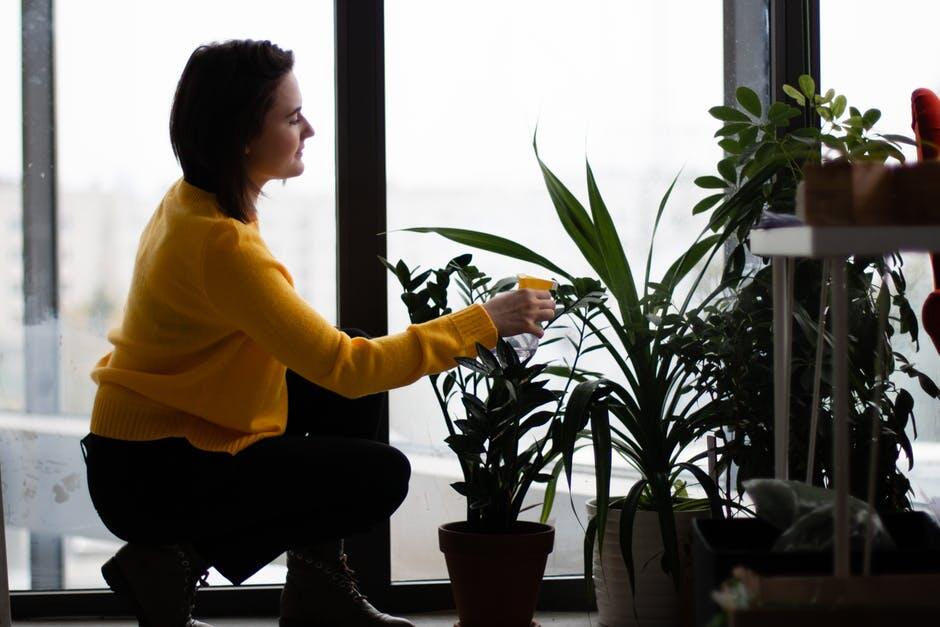Are you ready to transform your living space into a green oasis? Indoor plants are not just a pretty addition. They bring life, color, and even health benefits to your home.
Whether you’re a seasoned plant parent or a curious beginner, this guide is packed with all you need to choose, nurture, and enjoy your leafy companions. Let’s dig into the world of indoor greenery and discover how these vibrant house plants can brighten your days!
Picking the Best Indoor Plants for Your Space
When picking the best indoor plants for your space, consider light conditions first. Some plants thrive in bright spaces, while others prefer darker corners.
For sunny spots, succulents like aloe vera and jade make hardy choices. On the other hand, the snake plant and pothos are perfect for rooms with less light.
Think about the size of your room as well. Large plants, like fiddle leaf figs, suit big rooms where they can spread out. Smaller spaces might benefit more from compact options like spider plants.
Lastly, choose plants that fit your lifestyle. If you’re a busy bee, low-maintenance plants such as ZZ and peace lilies might be the best choice for you.
Houseplant Lighting Basics
Light is a vital component of photosynthesis, the process through which plants create food. Different houseplants have specific lighting needs. Understanding these can set you up for success.
Bright Light Requirements
Plants that need bright light generally prefer a sunny spot near a window. They usually thrive when exposed to direct sunlight for several hours each day.
However, too much direct sunlight can sometimes scorch leaves, so monitor their condition. Adjusting the location slightly or using sheer curtains can help balance light exposure.
Indirect Light needs
A spot near a window with sheer curtains is perfect for these plants. Indirect light ensures they get enough energy without the risk of leaf burn.
These conditions mimic the dappled light plants might find under a tree canopy.
Low Light Tolerance
Some plants are well-suited for low-light environments. They can survive in dimly lit rooms or areas without direct sunlight.
Yet, even these plants need some exposure to natural light. Regular rotation can help all sides get enough light.
The Importance of Pot Size and Material
Choosing the right pot ensures that your plant’s roots have enough space to grow. A pot that is too small can restrict root development, leading to stunted growth.
On the other hand, a pot that is too large may hold excess water, causing root rot. It’s important to match the pot size with your plant options to provide ideal growing conditions.
The material of the pot also plays a crucial role. Clay pots, for instance, are porous and allow air and moisture to penetrate the walls. This benefits some plants that prefer drier conditions, such as succulents.
Plastic pots retain moisture longer, which could be advantageous for plants needing more humidity. However, ensure your pot has drainage holes, irrespective of the material, to avoid waterlogging.
Tips for Proper Watering Techniques
Begin by understanding the unique needs of each plant. For instance, tropical plants often require more frequent watering due to their native humid environments.
Next, examine the top inch of soil to gauge moisture levels. If it feels dry, it’s time to water. However, unique plants like succulents prefer their soil to dry out between waterings. This method mimics their natural arid habitats.
Always water at the plant’s base to ensure the roots receive adequate hydration. Avoid wetting the foliage, as this can lead to fungal diseases.
Additionally, it’s beneficial to use lukewarm water to prevent shocking the roots with a sudden temperature change. Lastly, don’t forget to adjust your watering routine according to the seasons.
Key Nutrients and Fertilizers for Growth
Nitrogen, phosphorus, and potassium are often called the “big three” nutrients because they are vital for plant growth. To provide these nutrients, use balanced fertilizers that include all three.
Liquid fertilizers can also be a good option as they provide nutrients quickly. Granular fertilizers release nutrients slowly and are good for long-term feeding.
In addition, some plants may need supplements like calcium, magnesium, or iron. Checking your plant’s condition can help you decide if these are necessary.
Using the right plant solutions ensures that your indoor garden thrives. Always follow the instructions on the fertilizer package to avoid overfeeding, which can harm the plant’s roots.
Using Plants to Enhance Interior Design
Indoor plants create a refreshing atmosphere, making a room feel more lively and welcoming. By carefully selecting plant decor, you can match them to your existing style.
Tall plants like rubber trees can create stunning focal points, while smaller options like succulents and herbs provide subtle accents. Moreover, hanging plants or wall-mounted displays add depth to your decor, making the most of vertical space.
Plus, grouping plants of varying heights and sizes offers visual interest and enhances the aesthetic of your home.
Managing Common Pests and Diseases
Inspecting new plants before bringing them home can prevent introducing pests into your indoor garden. Regularly cleaning foliage also helps remove dust and insects hiding there.
If you do notice pests or signs of disease, act quickly to treat the issue. Natural remedies like neem oil or soapy water solutions can help control common pests such as aphids and spider mites.
For more severe cases, consult a professional or use commercial pesticides as directed.
The Psychological Benefits of Indoor Greenery
Having plants around can reduce stress and make us feel calmer. This soothing effect helps improve focus and productivity, making them ideal additions to workspaces.
Greenery enhances creativity by providing a soothing visual break, encouraging a fresh perspective. Additionally, indoor plants can improve mood and reduce symptoms of anxiety and depression.
For those interested in adding these benefits to their homes, there are many plants for sale online, making it easy to start an indoor garden at any time.
Choosing the Right Soil for Your Indoor Plants
Creating your indoor oasis is a journey with growth, learning, and unique rewards. Bringing in plants not only uplifts your surroundings but also your spirit. As you nurture your green companions, you’ll find joy in their development and the tranquility they provide.
So, why wait? Start exploring the green world today. Your favorite indoor plants are just around the corner.
Did you find this article helpful? Check out the rest of our blog now!







